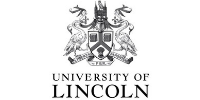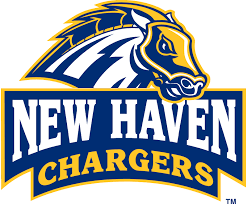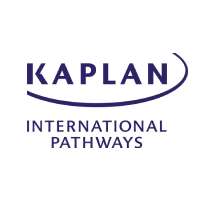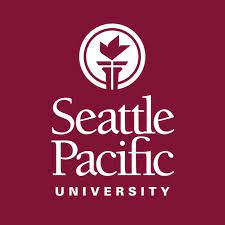F1 Visa Guide: US Student Visa Requirements, Process, Fees for International Students
6 mins read 3338 Views
By Prabhadri Suman|Updated On - 2023-03-15 07:53:38
This step-by-step guide to US visas has been put together to help you in getting started and will explain what an F1 visa is, F1 visa rules, and F1 visa requirements.
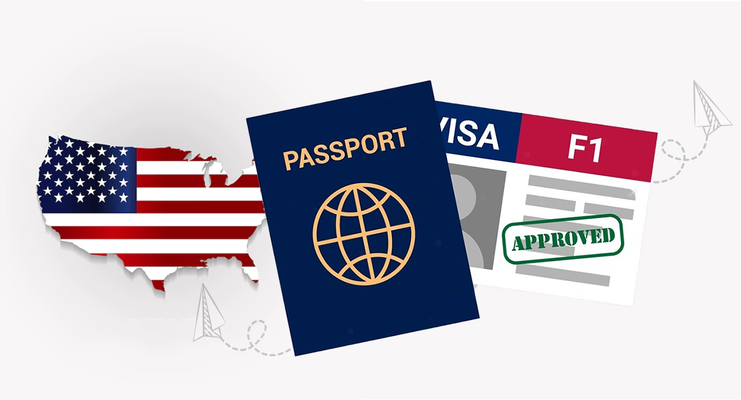
Topics Covered:
- Types of USA Study Visa
- F1 Visa Rules and Regulations
- Working hours for USA Student F1 Visas
- F1 Visa Cost
- Documents Required for F1 Student Visa Application
- How to Apply for US Student F1 Visa?
- F1 Visa Processing Time
- US Student Visa Interview Process
- F1 visa validity
- Renewing of F1 visa
- Maintaining F1 Visa Status
Being accepted to your dream college is only the beginning of your study abroad journey. The USA student visa application is the most important step of the process and can be a prolonged endeavor. Despite the extra effort, it is absolutely worth it because the USA is one of the most popular locations for students from all over the world, which makes the F1 visa application process more competitive compared to other countries.
The USA remains the most preferred destination for students wishing to pursue their studies in a foreign country. After getting admission in a US university of your choice, the next step to fulfilling your dream is to apply for F1 visa. This guide offers a comprehensive overview of the various types of visas available and a detailed process of applying for the F1 Student Visa for those seeking to pursue a bachelor's or master's degree in the US.
Students who want to pursue their studies in the United States must be informed about the steps to apply for the F-1 student visa. Presently, more than a million foreign students are studying in the US and with the right preparation and direction, you can be one of them. To assist you, we have prepared this step-by-step guide to US visas to help you comprehend what an F-1 visa is, the regulations pertaining to it and the requirements to obtain it.
Types of USA Study Visa
The US offers three different kinds of student visas:
F-1 Student Visa:
This particular US student visa is quite popular, fitting for almost any academic program that needs more than 18 hours of attendance each week. It applies to both undergraduate and postgraduate courses.
Family members who come along with a person who already has an F1 visa will need an F2 visa. It should be mentioned that companions of the F-1 visa holder are not allowed to be employed but can still travel to the U.S. with them and/or apply for their own visa in order to study or work.
J-1 Exchange Student Visa:
The J-1 visa is suitable for those seeking a short-term program to study or work in the United States, such as students, scholars, and working professionals. This visa is also valid for those individuals visiting the US to participate in exchange programs.
The J1 visa is generally requested by someone who is employed and visits the United States for an exchange program, thus being called the Exchange Visitor Visa. This could comprise of a period of 10-month vocational training or even a study fellowship, etc. Whatever the situation may be, the applicants will be alerted to it by their respective organizations.
A J-2 Visa will be required for any family members who are accompanying a person who holds a J-1 Visa. It is important to remember that by obtaining permission beforehand, the spouse is able to gain the ability to work.
M-1 Vocational/ Non-Academic Visa:
The M1 visa is a form of student visa specifically designed for those attending vocational and technical schools. Although the application process between the F1 visa and M1 visa is quite alike, the main distinction lies in the fact that when entering the country, M1 visas are allocated with a predetermined expiry date, and those who hold them cannot stay past the designated time.
The US Government offers three different student visa types:
| Types of student visa | Description |
| F-1 Student Visa | To gain knowledge at a recognized American college or university or to learn English from an English language school. |
| J Exchange Visa | For taking part in a student exchange program, whether in high school or college, |
| M Student Visa | For non-academic or vocational training in the United States |
F1 Visa Rules and Regulations
If you intend to apply for an F-1 student visa, there are several F1 visa rules to keep in mind. For your application to be approved, you must fulfil the following requirements:
Institution status: In order to enroll in a college or university, SEVP Immigration & Customs Enforcement must give its approval.
Full-time enrollment - In order to be eligible, you must be registered as a full-time student at the university while classes are being held.
English language proficiency - In order to be accepted into the institution, one must have achieved the necessary level of English language proficiency, or be taking classes to help them build up their English proficiency.
Sufficient funding - It is essential for you to demonstrate that you possess the financial resources to cover the cost of your education and daily living costs while in America.
Valid passport - The expiration date of your passport must be no less than six months after the end of your program in the United States.
Home country residency - After finishing your degree, you must possess a home that is located in your nation of origin.
Working hours for USA Student F1 Visas
During their first year of study, students are barred from taking up any off-campus jobs. They are only allowed to work for a maximum of 20 hours a week. However, during holiday and vacation times, they can work for a maximum of 40 hours a week. It is possible for them to work for a commercial business that has a connection to their college, such as a bookstore or cafeteria.
F1 Visa Cost
Now that we understand the specifications needed to apply for a United States student visa, let us take a look at the associated cost. The expenses associated with acquiring a USA student visa can be separated into two sections, the SEVIS fee and the visa application payment.
There are two costs related to an F1 visa fees for the United States.
- SEVIS fee
- Visa Application Fee
The following list outlines the expenses associated with each variety of student visa in the United States:
| Type of Fee | F-1 Visa Type | J-1 Visa Type | M-1 Visa Type |
| SEVIS Fee | 350 USD | 220 USD | 350 USD |
| Visa Application Fee | 160 USD | 160 USD | 160 USD |
Documents Required for F1 Student Visa Application
When applying for a student visa, it is essential that you have all necessary documents, as well as financial and academic records, to present. Therefore, ensure to go through this list of paperwork before visiting the consulate for the visa interview. Check out the F1 visa requirements:
- A passport that is still valid for a period of time that exceeds the duration of your stay by at least six months is required.
- A printed copy of the online application form DS-160
- SEVIS Fee Receipt
- Interview appointment letter
- Form I-20 sent by the college
- Visa fees payment confirmation receipt
- A bank statement for the past three years demonstrating that you have sufficient assets to cover the first year's expenses.
- Pay/salary slips
- Original mark sheets/provisional certificates
- Score card of exams TOEFL, GMAT, IELTS, etc.
Supporting Financial Documents required for F1 Visa
In order for USA students to gain admission, they must demonstrate evidence of sufficient funds to cover the total costs of their first year of study, including tuition, living expenses and miscellaneous items such as textbooks. Additionally, they must also provide proof that they have the financial resources to sustain them throughout the entirety of their educational program.
Evidence of Financial Resources for F1 Visa
- Tax returns for the past 3 years
- Bank statements for the past 3 years
- Salary slips and letters of employment
- Statement from certified CA
- Scholarship letter
- Bank or authority approval letter for a loan
How to Apply for US Student F1 Visa?
For a USA Study Visa, there are several steps to follow:
- The process of obtaining your visa begins when you acquire the Form I-20 from your college. Even though you possess the option of paying the SEVIS fee at any point during the application process, it is highly recommended that you settle the SEVIS I-901 fee before you begin the application for the US visa.
- Once you have paid the SEVIS fee and obtained the necessary proof, you can submit your DS-160 visa form. This document must be completed on an online platform.
- Make sure to print out the confirmation page of the application form to bring to your interview.
- Make the payment for the visa fee either via NEFT or at an official AXIS bank/Citi bank branch.
- Make an arrangement for a Biometric and Interview session.
- During the Biometric appointment, you must be physically present to have your photo taken for the visa and have your fingerprints scanned.
- During the one-on-one interview, the interviewer will inquire about your college selection, financial status, and plans to return home. If they are pleased with your answers, they will keep your passport to grant you the visa.
Step-by-Step Process for F-1 Student Visa Application
Those who are interested in studying abroad usually go for the F-1 Student Visa. The process of applying for this visa consists of three main steps, which are:
| Step 1 | SEVIS fee and I-20 form collection | After paying the SEVIS fee, you will receive an I-20 form from your academic institution. You must complete the form correctly and bring it to the F-1 visa interview. |
| Step 2 | VISA fee and form collection | Make your visa payment at a bank or through NEFT and get the visa application form. Complete the form carefully and bring it with you for the interview. |
| Step 3 | D-160 Form | Make sure to complete the D-160 form accurately and bring the confirmation and necessary paperwork to the visa appointment. |
| Step 4 | VISA interview | The US embassy will be in touch with you to give back the passport with the visa stamp. You should attend the interview with the visa officer no less than 120 days prior to the beginning of your program. |
How to Apply for USA Study Visa?
You need to apply for the student visa on the US Embassy and Consulates India website electronically. Make sure you submit the application no later than four months prior to the commencement of your program. You need to pay the visa fee and SEVIS fee to secure a date for your appointment and finish all the paperwork for the visa.
F1 Visa Processing Time
Generally, the amount of time it takes to process a USA student visa is approximately 3-5 weeks. Depending on the type of visa applied for, the processing time could be even longer, lasting up to two or three months. For F1 visa processing time will typically be shorter than other visa types.
The typical wait time for applicants to receive their visa hard copy after receiving a favourable response from the US visa consulate is two to three days. Additionally, F-1 visas are granted before 120 days have passed since the start of your US academic programs.
US Student Visa Interview Process
An interview with a US visa officer is the final stage of the visa application process for Indian learners. A successful conversation with the visa official can lead to the immediate granting of a student visa once the discussion is over!
The interview for a US student visa from India is not the longest part of the whole process, and typically only lasts for 4-5 minutes. When you arrive for your interview, it is essential to bring all the required documents, which should be sorted and organized in one folder.
During the interview for a US visa, the questions are typically related to your motivation to come back home and your knowledge of the course, college, and finances. When the questioning is finished, the visa officer will take your passport to issue the visa.
F1 visa validity
A F1 student visa allows people to remain in the United States for up to five years, but the length of their residency status is recorded on the I-20 form and is effective until the completion of their studies.
Renewing of F1 visa
It is only possible to renew an F-1 visa by visiting a U.S. embassy or consular office located outside of the U.S. The individual should contact the U.S. embassy/consulate in their home country to arrange a meeting. The amount of time it will take to receive the appointment and the visa issuance may differ.
Steps to Renew F-1 Visa
To get your F-1 visa renewed, you will have to go through the same process as when you initially applied for it.
- The first step is to fill in the visa application form, DS-160, and print the confirmation page.
- After that, you need to book an appointment with the consulate or embassy. In certain cases, you might be eligible to waive the interview requirement.
- Then you must gather all the documents that were mandatory during the first visa application and if it is needed, get apostille stamps and translate them.
- Before the interview, you have to pay the visa application fee and keep the fee receipt with you.
- Finally, attend the meeting for the renewal of your F-1 visa. Meet the standards you had to fulfill at the time you initially applied for your F-1 student visa, you should be able to receive your visa renewal.
After you have made a request for an extension of your F-1 visa, you must remain in the country from which you sent the application until the procedure is completed and you are not allowed to travel to the US. In the event that your application for an extension is denied, you will have to go back to your own country.
It is suggested that you should apply for a renewal of your F-1 visa from your own country of residence as this will make the application process simpler for both you and the embassy/consulate.
Maintaining F1 Visa Status
To maintain your valid non-immigrant F1 visa status, you must have:
- An valid passport
- A valid Form I-20 with a current signature
- A full-time course load in each required term of study
- After finishing your degree, you must possess a home that is located in your nation of origin.
- OPT or CPT authorization for any work off-campus
- Proper transfer, extension, or change of program
Conclusion
For Indian students, the application procedure for a US visa can be relatively straightforward and smooth as long as all of the necessary documents and data are accurate. Doing well in the interview can open up a lot of opportunities for you! If you are still unsure about how to apply for an US student visa, you can get in contact with our Edmissions specialists at edmissions.com for assistance!
For a quick overview related to study abroad, click here
Latest Blog Posts
Trending Posts
Popular Colleges to Study Abroad
Blog FAQ's
Top Study Abroad Exams
Popular Universities to Study Abroad
- University of Waterloo
Waterloo
- University Canada West
Vancouver
- University of Windsor
Windsor
- Cape Breton University
Sydney
- Dalhusie University
Halifax
- Carleton University
Ottawa
- University of Ottawa
Ottawa
- University of Guelph
Guelph
- Explore more colleges in Canada
- University of New Haven
West Haven
- Kent State University
Kent
- Wright State University
Dayon
- San Jose State University
West Haven
- Clark University
Worcester
- Rowan University
Glassboro
- Golden Gate University
San Francisco
- Arkansas
San Francisco
- Explore more colleges in USA
- Coventry University
Coventry
- University of Birminghame
Birminghame
- De Montfort University
Leicester
- Cardiff University
Cardiff
- BPP University
London
- University of West London
London
- University of Nottingham
Nottingham
- University of Warwick
Coventry
- Explore more colleges in UK
- Auckland Institute Of Studies
Auckland
- Massey University - Auckland Campus
Albany
- Eastern Institute of Technology - Auckland Campus
Auckland
- NorthTec - Auckland Campus
Auckland
- Massey University - Manawatu Campus
Palmerston North
- University of West London
London
- Wellington Institute of Technology (WelTec) - Petone Campus
Lower Hutt
- Otago Polytechnic - Dunedin Campus
Dunedin
- Explore more colleges in New Zealand
- Chandigarh University
Mohali
- Parul University
Vadodara
- Sharda University
Greater Noida
- Jain University
Bangalore
- Bennett University
Greater Noida
- Lovely Professional University
Phagwara
- Chitkara University
Rajpura
- Brainware University
Kolkata
- Explore more colleges in India
- Abu Dhabi University
Abu Dhabi
- Gulf Medical University
Ajman
- New York University
Abu Dhabi
- Emirates Aviation University
Dubai
- Higher Colleges of Technology
Dubai
- British University in Dubai
Dubai
- Al Ghurair University
Dubai
- American University in the Emirates
Dubai
- Rochester Institute Of Technology Dubai
Dubai
- Emirates Academy of Hospitality Management
Dubai
- American University of Ras Al Khaimah
Ras Al Khaimah
- Explore more colleges in UAE
- Ras Al Khaimah Medical and Health Sciences University
Ras Al Khaimah
Search, Shortlist, Apply and get accepted! It’s that Simple to pursue your dream to Study abroad with Edmissions. Our team of experts provide you the right guidance that helps you to take admission in your dream college in countries like Canada, the USA, the UK
© 2021-2024 Edmissions - All rights reserved.
TALK TO OUR EXPERTS






